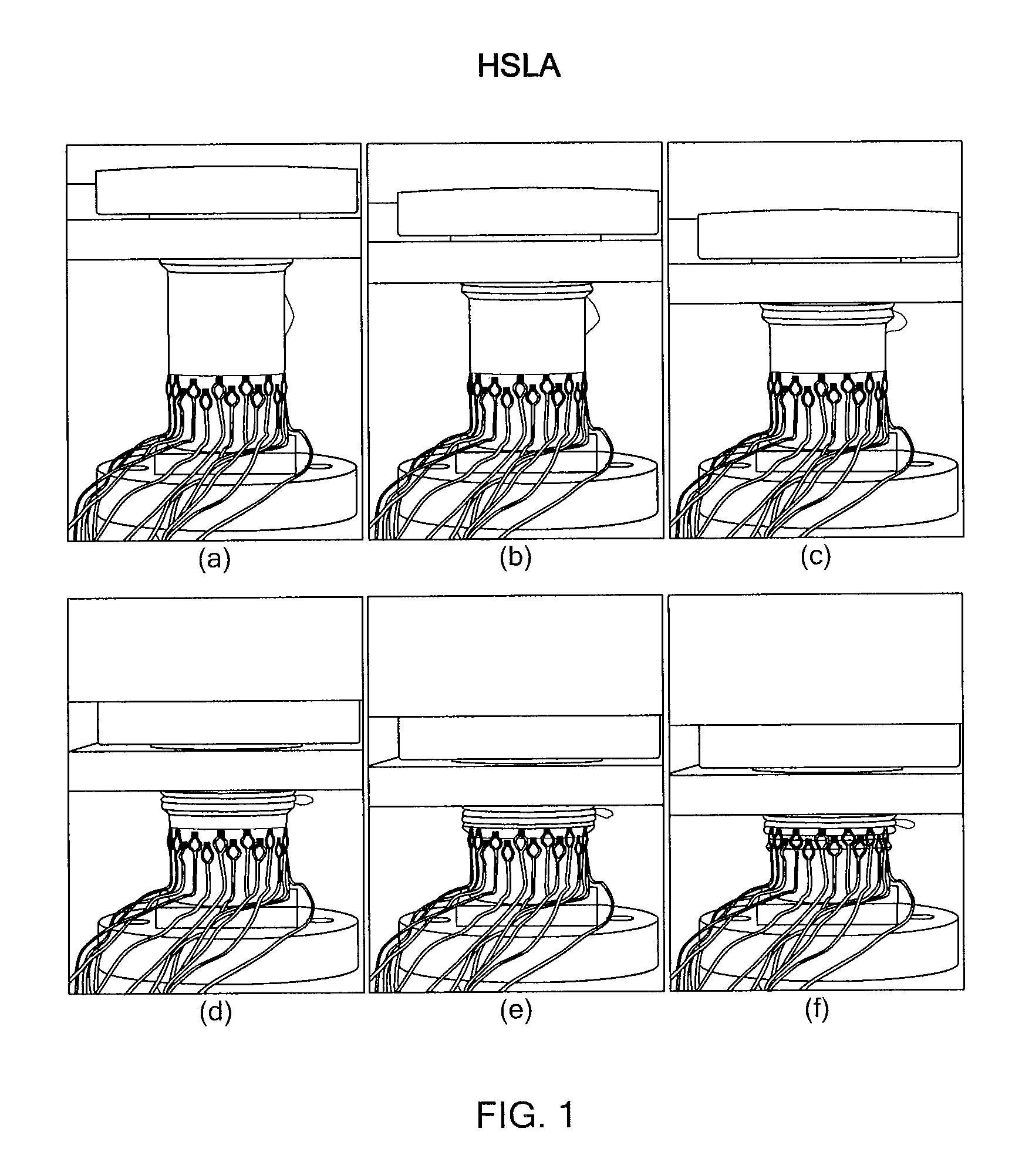Material mechanical characterization method for multiple strains and strain rates
- Summary
- Abstract
- Description
- Claims
- Application Information
AI Technical Summary
Benefits of technology
Problems solved by technology
Method used
Image
Examples
Embodiment Construction
[0041]As schematically shown in FIG. 3, a measuring system 100 that performs various measurements regarding strain and strain rates is provided. The hydraulic test system includes a test frame 106 and a hydraulic actuator 131 that pulls down on a grip 120. Such pulling motion results in deformation of the specimen 116, 116′ (specimen 116′ of FIG. 7 is shown, for example). The operation mechanism of the hydraulic system is described by Y. Wang et al. entitled “Characterization of High Strain Rate Mechanical Behavior of Az31 Magnesium Alloy using 3D Digital Image Correlation.” The deformation is measured via a 3D Digital imaging correlation system 104 that can generate a full field displacement map. The system 104 includes two high speed digital cameras 130 and a control and data acquisition unit 105. An example of a suitable digital camera 130 is the Photron FASTCAM SA5 which provides 7,500 frames per second (fps) at resolution of 1024×1024 pixels and reduced resolution operation to ...
PUM
 Login to View More
Login to View More Abstract
Description
Claims
Application Information
 Login to View More
Login to View More - R&D
- Intellectual Property
- Life Sciences
- Materials
- Tech Scout
- Unparalleled Data Quality
- Higher Quality Content
- 60% Fewer Hallucinations
Browse by: Latest US Patents, China's latest patents, Technical Efficacy Thesaurus, Application Domain, Technology Topic, Popular Technical Reports.
© 2025 PatSnap. All rights reserved.Legal|Privacy policy|Modern Slavery Act Transparency Statement|Sitemap|About US| Contact US: help@patsnap.com



